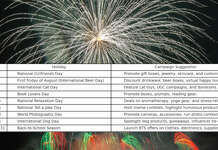The launch of Apple Vision Pro, however, is exciting. It does not clearly define itself as VR or AR, but advertises as a “spatial computing device”, which allows us to see how its core technology has narrowed the distance for “real experience”. So how does Apple Vision Pro truly achieve an immersive experience? And can all our senses be convinced that the experience it presents is real?
How augmented reality is Transforming the spatial computing landscape
Thanks to developments in augmented reality (AR), the landscape of spatial computing is changing. A layer of virtual information that may be interacted with can be added to the real environment using the technology known as augmented reality (AR). The way we interact with the things in our surroundings and with one another might be completely transformed by this technology.
There are already several sectors where AR is being used in spatial computing. For instance, interactive infotainment systems that give drivers up-to-the-minute information about their surroundings are being created using it in the car sector. Additionally, virtual product displays and interactive training on how to utilize them are being employed in the retail industry to improve the consumer experience.
In the world of architecture, AR is also making a difference. Using augmented reality (AR), architects can see and interact with their ideas before they are produced, making it simple and quick for them to make adjustments and obtain feedback. The price and duration of conventional architectural procedures may be lowered as a result.
In the entertainment sector, AR is also being utilized to create immersive experiences. AR features are now being added to games and movies, enabling spectators to interact with virtual people and objects that seem to be a part of the real environment.
The precision of location-based services like navigation and mapping is also being improved with the use of augmented reality. These services can give consumers more precise and helpful data by superimposing digital information on the real environment.
In general, augmented reality is changing the field of spatial computing and improving how individuals interact with their surroundings. The way we see and engage with our world will likely continue to change as technology develops.
The Potential of Mixed Reality and the Future of spatial computing
The way people engage with technology is changing as quickly as the rest of the world. While mixed reality (MR) has just been studied, virtual and augmented reality (VR and AR) have been available for a while. Users may interact with digital items as if they were real because to the way MR mixes elements of VR and AR.
Already, MR has been used in a number of industries, including healthcare, education, and gaming. Prior to using these treatments on actual patients, medical practitioners can better grasp the anatomical and practical aspects of the operations by simulating them using MRI in the healthcare industry. Students may explore virtual worlds and get a greater grasp of a variety of subjects thanks to the usage of MR in educational settings. With the help of MR, game designers can now produce engaging interactive experiences that connect the actual and digital worlds.
The potential of MR, however, goes well beyond these application scenarios. Spatial computing, which aims to merge physical aspects with digital ones to produce a more natural and intuitive user experience, has received greater attention in recent years. To develop immersive and interactive worlds, spatial computing blends the strength of MR with the Internet of Things (IoT). Users may, for instance, engage with digital things in a real-world setting, like a living room, and have those objects react to their activities.
The potential for MRI with spatial computing is quite promising. The potential for MR to revolutionize how we interact with technology and our surroundings is enormous as technology continues to advance and become more interwoven into our lives. As technology advances, we may be able to develop novel experiences and uses that were previously unimaginable. The potential of MR and spatial computing has only just begun to be explored, and in the years to come, it is probable that this potential will only grow.
How the Evolution of Spatial Computing is Being Shaped by the Internet of Things
Our interactions with the physical environment are changing as a result of the Internet of Things (IoT). IoT technology has advanced and spread significantly in recent years. As it develops, it is playing a crucial part in the advancement of spatial computing, a cutting-edge technology that has the potential to completely change how we interact with our surroundings.
The area of spatial computing, which is still in its infancy, integrates tangible items in the environment with virtual and augmented reality. It enables us to engage with our surroundings in a way that seems more intuitive and natural. Spatial computing can close the gap between the digital and physical worlds by utilizing IoT, enabling more seamless and natural interactions with our surroundings.
Virtual and augmented reality is where spatial computing is most prominently used. Users can have a more immersive and participatory experience with the surroundings by wearing headphones. Users may engage with the environment more naturally by implementing IoT technologies. For instance, when a user enters a room, sensors built into the walls may recognize the space and show the user information about it via their headphones. Without having to do a manual search for information, this enables the user to engage with their surroundings in a more natural way.
Advanced spatial computing applications are also powered by IoT technologies. Robotic systems with IoT capabilities, for instance, can be utilized to automate environmental duties. Robots may be designed to move and interact with the environment in a number of ways by utilizing sensors and actuators. This creates a wide range of opportunities, including automated manufacturing facilities, self-driving automobiles, and home automation systems.
IoT technology will continue to influence the growth of spatial computing as it develops. Spatial computing will become more potent and logical as a result of using IoT, enabling people to engage with their surroundings in a more organic and immersive manner. This technology will profoundly affect how we interact with the physical world and is certain to have a long-term effect on computers.
Spatial Computing
Spatial computing has witnessed remarkable advancements in recent years, revolutionizing the way we interact with digital content and the physical world. This article explores the journey of spatial computing, tracing its evolution from augmented reality (AR) to mixed reality (MR). Let’s dive into this fascinating realm of technological progress.
I. Augmented Reality (AR): Bridging the Digital and Physical Worlds
Definition and Basics:
- Introducing Augmented Reality (AR)
- Understanding the concept of overlaying digital information onto the real world
- Key components: sensors, cameras, and display devices
Early Applications and Limitations:
- Early pioneers and AR experiments
- Entertainment and gaming applications
- Challenges faced: limited hardware capabilities, low processing power
Expansion into Various Industries:
- AR in retail: enhancing customer experiences, virtual try-ons, and personalized shopping
- AR in education: immersive learning, visualizing complex concepts
- AR in healthcare: surgical training, patient visualization, and remote consultations
II. Mixed Reality (MR): The Seamless Blend of Real and Virtual Worlds
Definition and Differentiation:
- Defining Mixed Reality (MR)
- Understanding the spectrum of reality technologies (AR, VR, and MR)
- The significance of real-time interaction between digital and physical elements
Advancements in Hardware:
- Introduction of MR headsets, such as Microsoft HoloLens and Magic Leap
- Inside-out tracking and spatial mapping for precise interactions
- Improved field of view and resolution for a more immersive experience
Transformation across Industries:
- Manufacturing and design: 3D modeling, virtual prototyping, and assembly guidance
- Architecture and construction: visualizing building plans, collaborative design reviews
- Training and simulation: realistic scenarios, skill development, and hazardous environment training
III. Key Technologies Enabling the Evolution:
Depth Sensing and Computer Vision:
- Exploring depth sensing technologies (e.g., LiDAR, structured light)
- Object recognition, tracking, and gesture control
Simultaneous Localization and Mapping (SLAM):
- Understanding SLAM and its role in spatial computing
- Real-time mapping of the physical environment and positioning of virtual objects
Artificial Intelligence and Machine Learning:
- Enhancing spatial computing with AI and ML algorithms
- Object recognition, scene understanding, and intelligent interaction
IV. Future Directions and Possibilities:
Wearable Devices and Everyday Integration:
- Miniaturization of hardware for mainstream adoption
- Smart glasses and contact lenses as future MR interfaces
5G and Edge Computing:
- Enabling low latency and high-bandwidth connections for seamless MR experiences
- Cloud-based processing for complex computations and content delivery
Social and Collaborative MR Experiences:
- Shared virtual spaces and multi-user interactions
- Remote collaboration and communication in a mixed reality environment
Conclusion:
Spatial computing has come a long way, evolving from augmented reality to mixed reality. The integration of digital content with the physical world has opened up endless possibilities across industries and transformed how we interact with technology. As advancements continue and technologies mature, spatial computing is poised to reshape our everyday lives and pave the way for a more immersive and interconnected future.






